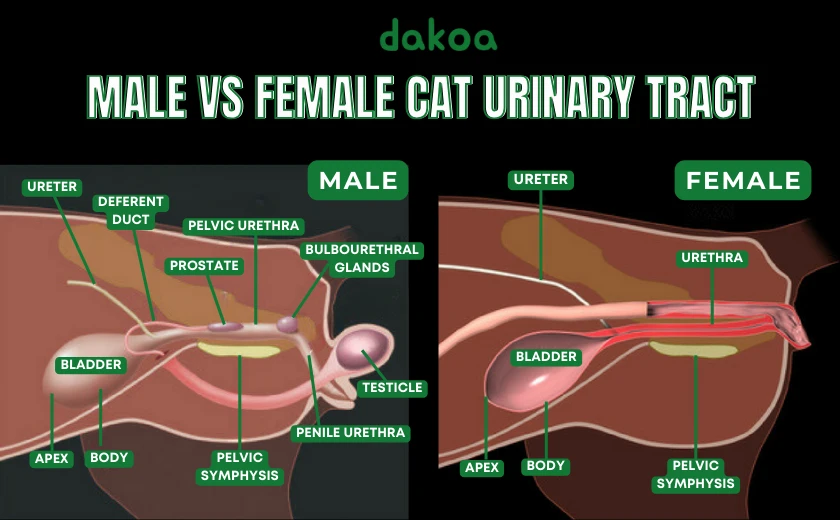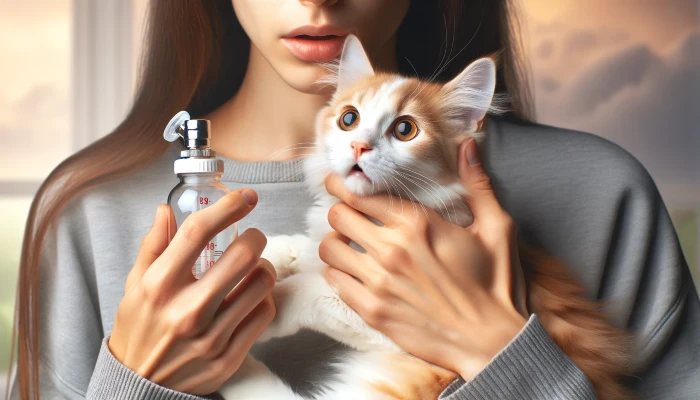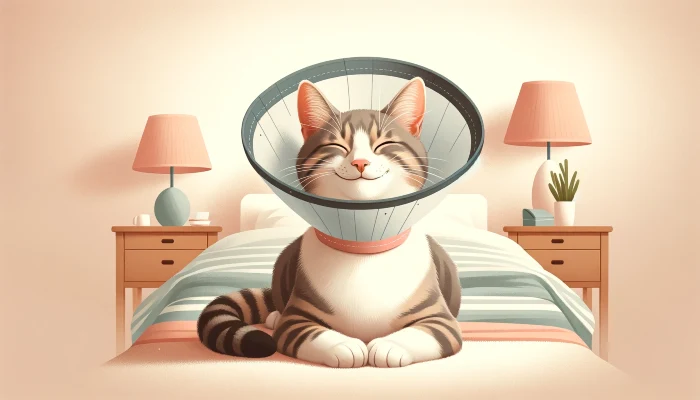Picking between a male or female cat isn’t just about personal preference; it’s a pivotal decision that can shape your household dynamics for years to come. Whether it’s the playful antics of male kittens or the dignified grace of female cats, understanding the nuances between the sexes is key to a harmonious home. This guide delves into the behavioral differences, physical distinctions, and personality traits unique to each gender, ensuring you make an informed choice for your new feline friend.
Essential Insights on Male vs Female Cats:
- Behavioral Differences: From the territorial tendencies of unneutered male cats to the calm demeanor of female counterparts, behavior varies significantly.
- Physical Differences: Noticeable distinctions in size, strength, and even coat colors like the patterns of tortoiseshell and calico cats in females and the prevalence of orange cats in males.
- Personality Traits: Individual cat personalities can defy gender stereotypes, offering a unique blend of quirks regardless of being a male or female cat.
- Health Concerns: Specific health risks, such as urinary tract infections in males and the potential for mammary tumors in females, highlight the importance of understanding each gender’s needs.
Equipped with this knowledge, you’re better prepared to choose a companion that fits seamlessly into your life, whether that’s a male kitten brimming with energy or a serene female kitten. As we explore the main differences and the biggest factors influencing cat behavior and health, your journey to finding the perfect cat—beyond just male vs female—begins here.
Physical Differences Between Male and Female Cats
When choosing between male and female cats, it’s not just their personalities that differ; their physical attributes do too. From the broad shoulders of male kittens to the delicate features of female cats, each brings its own set of characteristics and health considerations to the table. Let’s break down what sets them apart.
Body Size and Strength
Generally, male cats take the lead in size and muscle mass. Unneutered males, in particular, have a more robust build, often with a more pronounced jowl area, marking the biggest difference when comparing adult cats.
Coat Color and Patterns
The world of cat colors is fascinating and somewhat predictive of gender. Calico and tortoiseshell cats are almost exclusively female due to the unique genetic makeup associated with their coat patterns. On the flip side, orange cats are more commonly male, making coat color an interesting, though not foolproof, indicator of a cat’s sex.
Health Concerns Specific to Gender
One of the main differences in health between male and female cats revolves around urinary tract issues.
Male cats, particularly unneutered males and those part of a multi-cat household, are at a higher risk for urinary tract infections (UTIs) and blockages. This is attributed to their narrower urethras, which can become blocked more easily than those of their female counterparts. For potential cat owners, this highlights the importance of considering not just the personality but also the long-term health needs of their new cat, whether they’re leaning towards a male or a female.
Understanding these physical differences is crucial for any cat parent. Not only do they influence how you might interact with your new feline friend (think bigger laps for bigger cats!), but they also play a significant role in the care and medical attention your cat might require down the line.
Whether you’re drawn to the striking patterns of a calico female kitten or the sturdy charm of an orange male cat, knowing these differences ensures you’re prepared to provide the best home possible for your new pet.

Behavioral Differences Between Male and Female Cats
Diving into the behavioral quirks of male and female cats reveals a world rich with unique patterns and instincts, shaped significantly by whether they are neutered or spayed. Understanding these behaviors not only helps in managing a multi-cat household, but also in creating a peaceful and engaging environment for your new cat. Let’s explore these differences, debunk some common myths, and highlight the realities of living with male and female cats.
Territorial Behaviors and Urine Marking
Unneutered male cats are renowned for their territorial instincts, often marked by urine spraying. This behavior, while natural, can be a challenge for cat owners, leading to the strong recommendation for neutering to mitigate such actions. Female cats can also display territorial behaviors, though less frequently, and are more likely to do so through physical means rather than urine marking.
Heat Cycles and Behavioral Changes
Female cats experience heat cycles if not spayed, leading to vocalizations, restlessness, and sometimes, attempts to escape outdoors in search of a mate. These cycles can affect the harmony of a household and are a strong case for spaying to prevent unwanted litters and reduce stress on the cat.
Myths vs. Realities About Cat Temperaments
A common myth suggests that male cats are more affectionate, while females are more independent. The truth is, individual personality plays a bigger role in a cat’s behavior than gender. While male cats might display more overt affection, female cats can form just as strong bonds with their human companions, often in a more subtle, dignified manner.
The Healthy & Loving Impact of Neutering and Spaying
Neutering male cats often leads to a reduction in aggressive and territorial behaviors, including fighting and urine marking. Similarly, spaying females not only eliminates heat cycles but can also temper their mood, making them more relaxed and predictable companions.
Understanding these behavioral nuances is essential for any cat owner. It helps debunk the myths that all male cats are a certain way or that female cats can’t be as affectionate. The reality is that each cat, regardless of gender, is an individual with its own set of traits, influenced by both genetics and environment. Whether dealing with the territorial sprays of an unneutered male or the vocal demands of a female in heat, knowing what to expect can significantly enhance the relationship between cat and owner, ensuring a happy, healthy household for all.
Personality Traits and Compatibility: Beyond Gender
When it comes to the heart and soul of your potential feline companion, their personality traits and how they mesh with your lifestyle and family members are far more telling than whether they’re a male or female cat.
Individual Personality: A Spectrum of Possibilities
The notion that the sex of the cat dictates its personality is a vast oversimplification. The spectrum of cat personalities and cat gender is more like our own. It’s unfair to say that all female cats act one way or all males behave this way.
A male kitten known for his rambunctious play in one moment can be the same cat seeking solace in the quiet of your lap the next, while a female kitten, often perceived as reserved, might reveal a spirited side, outmatching her male counterparts in energy and mischief.
Anecdotal Insights: Shaping Personalities Through Experiences
- The Tale of Oliver and Luna: Oliver, a robust male cat, was known in his neighborhood for his gentle demeanor, a testament to the nurturing environment provided by his guardians. Despite his size, he would often be found cradling the smallest kittens at the local shelter, where he served as a sort of gentle giant among cats.
- Luna’s Legacy: Luna, a sleek female with a coat as dark as the night sky, had a reputation for being aloof. However, her guardians noticed a shift when they introduced her to puzzle feeders and interactive play. Luna blossomed into a curious, engaged companion, illustrating how environmental enrichment can unlock hidden facets of a cat’s personality.
Compatibility: The Key to a Harmonious Home
Finding the right match goes beyond male vs female and delves into understanding what makes each cat unique. Consider the following when seeking compatibility:
- Energy Levels: Aligning your cat’s energy with your household’s rhythm—be it calm or chaotic—is crucial. A high-energy kitten might thrive in an active home, while a more laid-back cat could be the perfect fit for a quieter environment.
- Social Needs: Some cats prefer the company of their human companions over other pets, while others might flourish in a multi-cat household. Observing a cat’s behavior in various social settings can provide insights into their preferences.
Choosing a new cat is a journey of discovery, one that transcends simple binaries like male vs female. It’s about connecting with an individual whose personality resonates with your own and whose quirks become endearing stories you share. Remember, the best indicator of a cat’s potential as your lifelong companion isn’t found in their gender, but in the unique blend of their personality traits, shaped by both their genetics and their experiences.

Considerations for Cat Owners: Ensuring Harmony at Home
Welcoming a new cat into your home comes with a bouquet of considerations that extend beyond the initial male vs female decision. From navigating the dynamics of a multi-cat household to mastering the art of litter box management, each aspect plays a pivotal role in fostering a happy, healthy relationship between you and your new feline friend. Here’s how to align these practicalities with the unique personality of your cat and the rhythm of your household.
Multi-Cat Households: The Balancing Act
Introducing a new cat to a household with existing feline members requires a thoughtful approach. Consider the personalities and territorial behaviors of your resident cats—whether they’re male kittens, adult cats, or a mix. Male cats, especially unneutered ones, may exhibit more dominant behaviors, while female cats can be equally territorial. The key is to ensure a gradual introduction, allowing all cats to adjust to each other’s presence peacefully.
Litter Box Management: A Cornerstone of Cat Care
Effective litter box management is crucial, not just for hygiene but for the comfort and stress levels of your cat. For multi-cat households, the general rule is one litter box per cat, plus one extra, to prevent any territorial disputes. This is especially important if dealing with unneutered male cats, who might use urine marking to assert dominance. Regular cleaning and strategic placement can also mitigate any unwanted behaviors, ensuring all cats feel secure.
The Impact of Neutering/Spaying
Neutering or spaying your cat holds significant benefits, from reducing the risk of certain health issues to minimizing problematic behaviors like urine marking in males and heat cycles in females. These procedures can also influence the overall temperament of your cat, often leading to a more relaxed and affectionate companion, making them better suited to various living situations, whether it’s a bustling family home or a serene single’s apartment.
Matching Cat Personality with Lifestyle
Perhaps the most crucial consideration is ensuring your cat’s personality is a good match for your lifestyle and household environment. An active, adventurous cat might be perfect for families with children or other pets, thriving on interaction and play.
At the same time, a more reserved or independent cat may be the ideal companion for someone seeking a calm presence. Observing potential new family members in various settings or discussing their history with adoption center staff can provide valuable insights into their personality and how well they might integrate into your home.
The journey to bringing a new cat into your life is filled with considerations that touch on every aspect of living with a cat. From managing multi-cat dynamics to aligning your cat’s personality with your lifestyle, each decision contributes to the creation of a harmonious home.
Keeping these considerations in mind, along with the practicalities of litter box management and the positive impacts of neutering or spaying, sets the stage for a fulfilling relationship with your new feline companion.

Making the Decision: Choosing Your New Feline Friend
As we’ve navigated the intricacies of male vs female cats, from their physical differences and health concerns to the nuances of their behaviors and personalities, the journey brings us to a pivotal decision point. Choosing the right cat goes beyond simple gender distinctions to embrace a deeper understanding of individual needs and compatibility.
Key Takeaways for Potential Cat Owners:
- Behavioral Differences: Whether it’s the territorial tendencies of unneutered male cats or the serene nature of a spayed female, behavior plays a significant role in your decision.
- Physical Distinctions: Keep in mind the general physical differences, like the muscular build of male cats or the unique coat colors linked to female genetics.
- Personality Over Gender: The individual personality of a cat, influenced by life experiences and environment, often outweighs gender in determining the perfect match for your household.
- Health Considerations: Be aware of gender-specific health risks, such as urinary tract issues in males, and how they might impact your care strategy.
While gender can offer initial insights, the essence of your choice should hinge on the personality and compatibility of your new cat with your lifestyle. Acknowledging personal preferences is important, but let the unique character of each cat guide your heart.
FAQ: Understanding Male vs Female Cats
Q: At what months of age can you tell the gender of a kitten?
A: Determining a kitten’s gender can be done as early as two weeks of age, typically around 6 to 8 weeks. However, it can sometimes be challenging for those without experience. Look for distinct differences in the genital area by looking at the distance between the anus and the genital opening below it, or consult a veterinarian for a professional opinion.
Q: Are there any biological differences in urinary health between male and female cats?
A: Yes, biological differences do exist. Male cats are at a higher risk for urinary obstructions due to their narrower urethras. This condition is less common in female cats.
Q: Is there any truth to the belief that male cats are better pets than female cats, or vice versa?
A: The idea that one gender makes better pets than the other is largely based on anecdotal evidence and personal preference of the guardian. The personality of the individual cat is a better indicator of compatibility with your lifestyle than the cat’s gender. Both male and female cats can make wonderful companions.
Q: How does sexual maturity affect a cat’s behavior?
A: Sexual maturity can lead to significant behavior changes in cats. Intact males may display territorial behaviors such as spraying, while females may go into heat, exhibiting vocalization and restlessness. Neutering or spaying can mitigate many of these behaviors.
Q: What are the main personality differences between male and female cats?
A: While gender can influence certain behavioral tendencies, the most important factor in a cat’s personality is its individual experiences and genetics. There’s little difference in the capacity for affection or playfulness between male and female cats; it truly is a matter of personality.
Q: Can the breed of a cat influence its personality more than its gender?
A: Yes, cat breeds can have distinct personality traits and tendencies that might overshadow gender differences. For example, Siamese cats, regardless of being male or female, are known for their vocal and social nature. Researching cat breeds and speaking with breeders can provide insights into what to expect from your feline furball.
Q: How do I decide between a male or female cat if I already have a resident cat at home?
A: Introducing a new cat to a resident cat requires careful consideration of both cats’ personalities and the existing cat’s reaction to newcomers. Some experts suggest that opposite genders may get along better, but the individual cats’ temperaments and how they’re introduced play a larger role in their future relationship.
Q: Are female cats more prone to certain health issues than males?
A: Female cats can be at risk for health issues like mammary tumors, especially if they’re unspayed. Conversely, males have their own set of risks, like urinary blockages. Consulting with a veterinarian from a reputable institution, such as the University of California Davis Veterinary Medical Teaching Hospital, can provide guidance tailored to your cat’s needs.
Q: Does the length of a cat’s coat indicate its gender?
A: Coat length isn’t a reliable indicator of a cat’s gender. Both male and female cats can have a range of coat lengths and types, depending on their breed and genetics. When choosing a cat, consider grooming needs and personal preference rather than using coat length to guess gender.
Q: What’s the best way to determine if a young kitten’s personality will fit with my household?
A: Spending time with the kitten and observing its behavior in various situations will give you a glimpse into its personality, well beyond any preconceived gender ideas. Remember to discuss the kitten’s background and any known history with shelter or rescue staff. The more you know, the better you can assess whether it’s a good match for your home.
Your Perfect Cat Awaits
Finding the right cat is a journey of discovery that transcends gender, focusing instead on the unique bond that forms between a cat and its human companion. The ideal match depends on individual circumstances, preferences, and the mutual joy and companionship that arise from this special relationship.
More To Discover
- How Much To Pay Your Cat Sitter – Daily, Weekly Rates (2024)
- Pet Health Issues You Shouldn’t Ignore: Prevention is Better (and Cheaper) Than a Cure
- Blue Ridge Beef Expands Pet Food Recall in 16 States Over Salmonella and Listeria Risks
- 7 Healthy Dog and Cat Treats You Can Make at Home [Recipes Included]
As you stand on the threshold of this decision, remember that countless cats, each with their own story and personality, are waiting for a loving home. Whether it’s a playful male kitten or a dignified female cat, the perfect companion for you is out there.
Don’t wait to meet your future feline friend. Visit local shelters or adoption centers today, where you can connect with cats of all ages, personalities, and, yes, genders. Your journey to finding the perfect cat isn’t just about bringing joy into your home; it’s about offering a second chance to a deserving cat. Start this rewarding adventure now and open your heart to the possibilities that await.
























